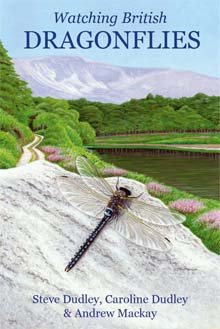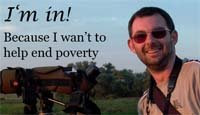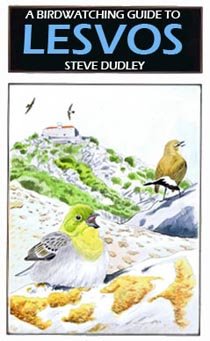Day 1 | Week 1 | A SPEYSIDE WILDLIFE holiday.
I meet up with the group at 8.15 am on the quay in Penzance and we board the Scillonian III for our sea passage to the Isles of Scilly. Just as we leave the quayside, we see a Rock Pipit obligingly sitting out on the harbour wall. We are soon heading out following the coastline towards Land’s End and the relative calm of Penzance harbour gives way to increasingly choppy seas and a strengthening south-westerly wind. The sea all around us looking more than a little lumpy with white horses atop the waves as the boat begins bounce, the height of the vertical movement of the stern getting steadily higher! A few of the passengers are looking decidedly green-gilled, but we are all OK and in good spirits, even when one mighty bow splash leaves Wendy soaked and a squall speeds through, heavens opening briefly upon us.
On the Scillonian III

Rough seas usually means good seabirds – bit not today. A few Herring Gulls kept up with the ship, but Gannets rarely approach close by. By the time we have first sight of the islands we have a very disappointing three Fulmars and one Manx Shearwater.
Land ahoy!

With sight of the islands our anticipation is heightened. We pass the Eastern Isles with the long, sandy-beached St Martin’s stretching out behind them. Looking down Crow Sound we can see Round Island lighthouse in the distance, with Tresco to its left disappearing behind the main island of St Mary’s. We turn in to St Mary’s Sound and St Agnes appears on our left, with the small island of Gugh sat in front of it. As we turn towards Hugh Town, the view south down to Bishop lighthouse is breathtaking. The flat island of Annet stretches in front of the jagged peaks of the Western Rocks. The twin hills of Samson come in to view, with Bryher tucked behind them and a closer view of Tresco.
St Mary’s quay

We disembark and head straight for our guesthouse. A relaxing drink and lunch before heading off along the beaches of Porthmellon and Thomas Porth and on to Porthloo. The wind is ever strengthening, and looking across the harbour to the docked Scillonian; the small boats dotted across the harbour are listing from side to side – even in the sheltered harbour side of the island. ‘I wouldn’t like to be heading back to Penzance in this’ remarks Alan. Despite the ferociousness of the wind, the beaches do hold some birds. Black-headed Gulls pick along the wet tide line at items deposited by the crashing waves. Turnstones walk through the litter along the dry high tide line, turning over lumps of seaweed to reveal tasty morsels. A couple of Wheatears brave the openness of the beach, one flitting around the dry seaweed, the other content to chase sandhoppers along the open sand.
With news of a ‘probable Pallid Harrier’ over Bryher then Tresco, I confidently predict that it won’t hang around and it would be either off to St Martin’s or the north of St Mary’s. With this in mind, the plan was to make for the open space of the golf course to look over to St Martin’s and Tresco. But . . . the strengthening wind would probably see us blown over up there, so we switch to Plan B – find some sheltered spots, just as much for ourselves as for the birds!
After grilling the exotica on Porthloo duckpond (Wood Duck, Fulvous Whistling Duck, Chiloe Wigeon etc), we take a slow meander along the Low Moors Nature Trail. House Martins and Swallows feeding over one area in the lea of a large stand of trees indicate a sheltered area, free of wind and in the warm sun. Bliss! Amidst the hirundines we pick out a lone Sand Martin, its small size, faster, jerky flight setting it apart from its larger cousins.
Two very different Speckled Woods


Whilst watching a couple of Speckled Wood butterflies around a bramble patch, I pick up on a Reed Warbler moving along the bracken hedge in front of us. Its pretty much hidden, put after a little while Charles picks it up a little further long the hedge and it eventually gives excellent views sat put on the brambles and bracken stems. It has a habit of hanging upside down and then lurching towards its insect victims which it picks off the plant stems. Other non-avian interest is provided by Long-winged Conehead (grasshopper family) and Small Copper and Common Blue butterflies.
We head in to the tangled, almost mangrove like willows of Lower Moors. At the near-dry Shooters Pool a Snipe gives brilliant views as it bathes in the puddle left in front of the viewing screen. Wendy picks up on a warbler which also comes down for a bathe, albeit out of view for most of us. Steve manages to get in a position to get a clear view and just as he announces it as a Willow Warbler it promptly takes flight and disappears headlong in to the dense willows.
At the first hide overlooking the Pool we get views of Greenshank, Redshank, Snipe and Dunlin – but we are looking straight in to the sun so we relocate to the other hide with the sun behind it. What a difference! Suddenly the near silhouettes are transformed into brilliantly lit birds – and how close are they! They are literally feet away from our line of binoculars. The Greenshank towers over the others, wading up to its belly in search of prey in the deepest parts of the pool. The Snipe have moved over to the back of the pool, but the Redshank and Dunlin pick along the nearest edge to us. The Dunlin is very delicately marked, with its gingery head, scalloped brown uppers and white underparts broken by smudgy chevrons down its flanks. A Kestrel drifts over and a White Wagtail makes a brief appearance.
Lower Moors Pool

Greenshank

Leaving the moors we find a Wheatear sat forlornly on a rock in the middle of a grass field (‘why am I hear?’ its probably asking itself) and on to a deserted Old Town Bay. Just past Nowhere (‘or is it now here?’ asks Charles) we come across a handful of wagtails on the playing field by the school. White and Pied – the white looking so much cleaner and smarter than the dingy, scruffier Pieds.
We are soon back in town and climbing the stairs of our guesthouse to our rooms. An hours rest before dinner, checklist and then off around the corner for Will Wagstaff’s (the Scilly Birdman) Wildlife of Scilly slideshow which simply whets our appetites for the week ahead!









No comments:
Post a Comment